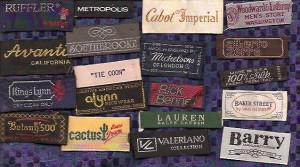 Is it just me, or do other people collect clothing labels like I do? I am convinced that "someday" I will figure out a way to use clothing labels as embellishments in a CQ block.
Is it just me, or do other people collect clothing labels like I do? I am convinced that "someday" I will figure out a way to use clothing labels as embellishments in a CQ block.
When I buy clothes, I look for color, fit and comfort, but I also look at the clothing label to see what it looks like, not just to see what brand it is. On rare occassions, I've actually considering buying a shirt just BECAUSE I liked the clothing label. (gggrin!) These labels usually mention environmental issues or world peace or believing in yourself.
Luckily, I've come to my senses and not bought these shirts because they didn't fit as well as I would have liked. But it was a tough call for a few minutes. I reeeeeeally wanted those labels for my collection.
If you are a "clothing label" fanatic like I am, please leave a note describing what you do with your labels. I will choose the person with the most unique idea for the use of labels and send you a small baggie full -- "FREE OF CHARGE" anywhere in the world.
Leave a note telling me how you use labels. I will choose a winner on Sunday morning, June 19th. For those of you on the other side of the Big Pond, I live in the Central Standard time zone in the U.S. if that helps.
- Hello, verry nice, i made a quilt of the labels, greeting from Holland! Jolanda
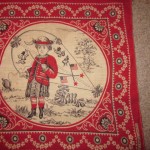
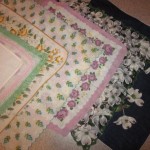
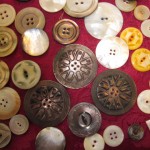
 Do "you" love buttons? My friend, Jennie, LOVES buttons as you can see from the photo here. She agreed to share a few photos of her favorites with you, my other friends.
When I arrived, Jennie's boyfriend said, "Oh...you're here to admire the buttons, aren't you. Lucky you! You're in for a treat." I walked into the dining room and there on her table was a display of buttons that truly impressed me. I haven't had time to write about them yet, but I thought I'd share a photo and get down to writing about it this weekend. Enjoy!
Do "you" love buttons? My friend, Jennie, LOVES buttons as you can see from the photo here. She agreed to share a few photos of her favorites with you, my other friends.
When I arrived, Jennie's boyfriend said, "Oh...you're here to admire the buttons, aren't you. Lucky you! You're in for a treat." I walked into the dining room and there on her table was a display of buttons that truly impressed me. I haven't had time to write about them yet, but I thought I'd share a photo and get down to writing about it this weekend. Enjoy!

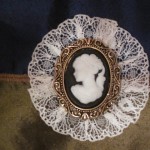
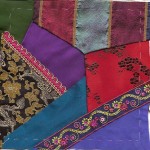
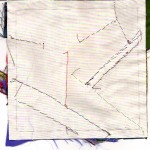 6. Once the foundation fabric is completely covered, I pin the seam allowances down and use matching threads to hand stitch the foundation and fancy fabrics together.
6. Once the foundation fabric is completely covered, I pin the seam allowances down and use matching threads to hand stitch the foundation and fancy fabrics together.

